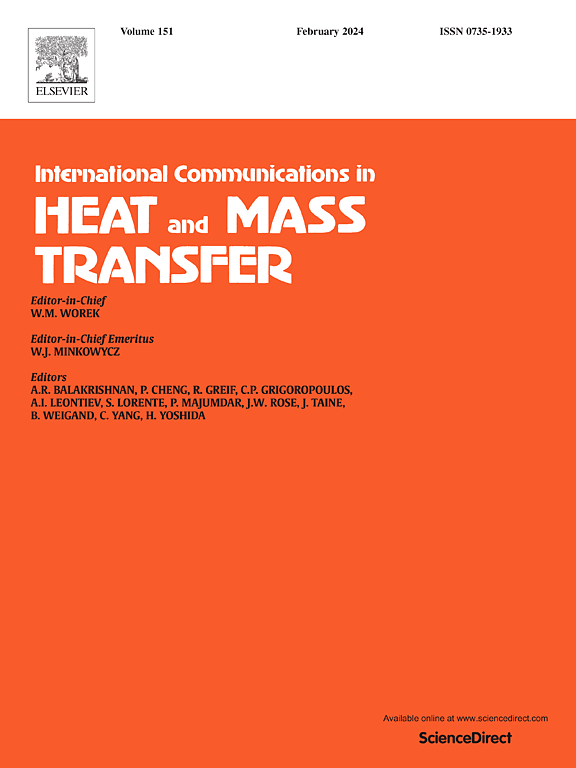Experimental and numerical study on smoke bifurcation in L-shaped passage fire under stack effect
IF 6.4
2区 工程技术
Q1 MECHANICS
International Communications in Heat and Mass Transfer
Pub Date : 2025-05-14
DOI:10.1016/j.icheatmasstransfer.2025.109075
引用次数: 0
Abstract
The L-shaped passage, widely used in subway entrances, mine laneways, and stairwells of high-rise buildings, is a confined corridor consisting of an inclined section and a horizontal section. Fires in L-shaped passages generate significant stack effect, leading to bifurcation phenomena in smoke flow within the passage. This study employs FDS software to numerically simulate smoke flow during fire incidents in L-shaped passages, investigating the effects of heat release rate (HRR), passage cross-sectional area, length of inclined segments, inclination angle, and ratio of horizontal to inclined segment lengths on stack effect and smoke bifurcation. The results indicate that passage height minimally affects smoke bifurcation, while HRR, passage width, length of inclined segments, and inclination angle significantly influence both the stack effect and the location of smoke bifurcation. Additionally, predictive expressions for the Froude number under different structural characteristics of L-shaped passages are proposed, along with criteria for evaluating smoke bifurcation phenomena under stack effect, as well as determining the location of maximum smoke temperature rise and smoke bifurcation. The findings provide valuable references for ventilation and smoke extraction design in buildings with similar structures.
烟囱效应下l形通道火灾烟雾分岔的实验与数值研究
l型通道是一种由倾斜段和水平段组成的密闭通道,广泛应用于地铁出入口、矿井巷道和高层建筑的楼梯井中。火灾在l型通道中产生显著的烟囱效应,导致通道内烟气流动出现分岔现象。本研究采用FDS软件对l型通道火灾过程中的烟气流动进行数值模拟,研究了放热率(HRR)、通道截面积、倾斜段长度、倾斜角和水平/倾斜段长度比对烟囱效应和烟雾分岔的影响。结果表明:通道高度对烟分岔的影响最小,而HRR、通道宽度、倾斜段长度和倾角对烟分岔的位置和烟囱效应均有显著影响。提出了l型通道不同结构特征下的弗劳德数的预测表达式,给出了烟囱效应下烟雾分岔现象的评价准则,以及确定最大烟雾温升和烟雾分岔位置的准则。研究结果可为类似结构建筑的通风排烟设计提供参考。
本文章由计算机程序翻译,如有差异,请以英文原文为准。
求助全文
约1分钟内获得全文
求助全文
来源期刊
CiteScore
11.00
自引率
10.00%
发文量
648
审稿时长
32 days
期刊介绍:
International Communications in Heat and Mass Transfer serves as a world forum for the rapid dissemination of new ideas, new measurement techniques, preliminary findings of ongoing investigations, discussions, and criticisms in the field of heat and mass transfer. Two types of manuscript will be considered for publication: communications (short reports of new work or discussions of work which has already been published) and summaries (abstracts of reports, theses or manuscripts which are too long for publication in full). Together with its companion publication, International Journal of Heat and Mass Transfer, with which it shares the same Board of Editors, this journal is read by research workers and engineers throughout the world.

 求助内容:
求助内容: 应助结果提醒方式:
应助结果提醒方式:


